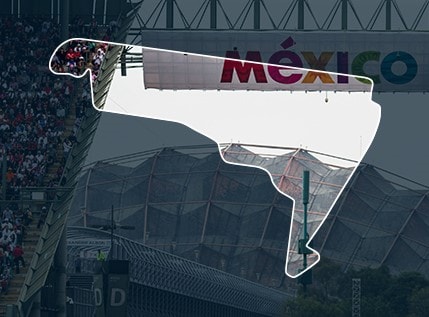
The Autodrómo Hermanos Rodriguez has hosted all the Mexican Formula 1 Grand Prix which have taken place between 1963 and 1992. Then, in 2015, the Mexico City race returned to the calendar and although some parts of the old track remain, many have been remodelled, while the facilities have also been updated by architect Hermann Tilke.
Features of the Hermanos Rodríguez Circuit
The Autodrómo Hermanos Rodriguez is definitely one of the most demanding circuits on the calendar: from aerodynamics to the engine, everything is affected by the fact the track is at altitude, rising past the 6,500 feet above sea level mark. The rarified atmosphere means the cars need to be run with maximum aero downforce, at the same level as Monaco and Singapore. At the same time, drag is reduced and, despite the high downforce, top speeds are very high.
The highest speed recorded was set by Valtteri Bottas in the Williams in 2016, when the Finn hit 372.5 km/h, also an outright record in Formula 1.
Engine performance is also affected by the altitude. The turbocharging system must suck in more air to reach the right aspiration pressure and in order to have the right cooling levels, air intakes will have to be opened up.
The brakes also need to be watched carefully at the Hermanos Rodriguez Circuit, as the driver spends no less than 21 seconds per lap with the left pedal buried to the metal and here too, brake ducts are more open than usual to keep everything at the right operating temperature, so that the discs and pads do not wear out too quickly.
Our guys can’t wait to get out on track in Mexico City and hear the cheers of the boisterous fans who pack the grandstands in the baseball stadium section: if they find time to glance upwards for a second, they will realise just how much the Mexican fans love our sport!